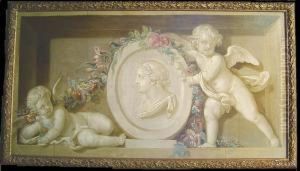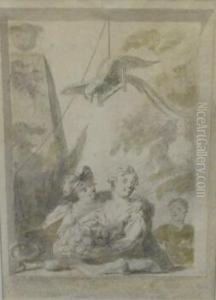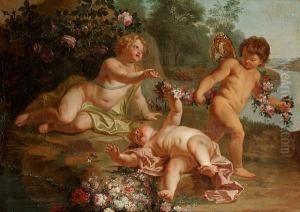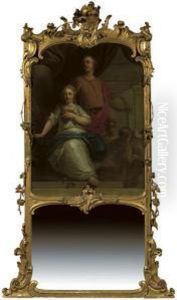Dionys Van Nijmegen Paintings
Dionys van Nijmegen was a Dutch artist, born in the year 1705 in Rotterdam, Netherlands. He is known for his contribution to the Rococo movement, a style that emerged in France in the early 18th century, characterized by its elaborate ornamentation, intricate patterns, and emphasis on themes of love, nature, and light-heartedness. Van Nijmegen was a versatile artist, proficient in painting, drawing, and the decorative arts, which allowed him to explore various aspects of the Rococo style and adapt it to the Dutch aesthetic of his time.
Van Nijmegen's artistic career was marked by a deep understanding of classical themes, which he skillfully integrated with the Rococo's playful and ornamental elements. His work includes a wide range of subjects, from mythological and historical scenes to portraits, landscapes, and genre scenes of everyday life. He was particularly admired for his ability to depict light and texture, creating vivid and dynamic compositions that captured the viewer's imagination.
In addition to his paintings, Van Nijmegen was also known for his work in designing and decorating interiors, where his talent for combining architectural elements with ornamental designs was highly sought after. This aspect of his work reflects the Rococo's influence beyond painting, extending into the design and decoration of luxurious and aristocratic spaces of the time.
Despite his success, Dionys van Nijmegen's work was, for a time, overshadowed by other contemporaries and the subsequent rise of Neoclassicism, which favored a more austere and restrained aesthetic. However, his contributions to the Dutch Rococo and the broader European art scene have been reassessed and celebrated in more recent years. Art historians and critics now recognize the significance of his work in bridging the gap between the Baroque and Rococo movements in the Netherlands, highlighting his unique ability to adapt and merge different stylistic elements.
Dionys van Nijmegen passed away in 1798, leaving behind a legacy that has continued to influence the appreciation of Rococo art in the Netherlands and beyond. His works are preserved in various museums and collections, where they continue to be studied and admired for their beauty, craftsmanship, and historical significance.



